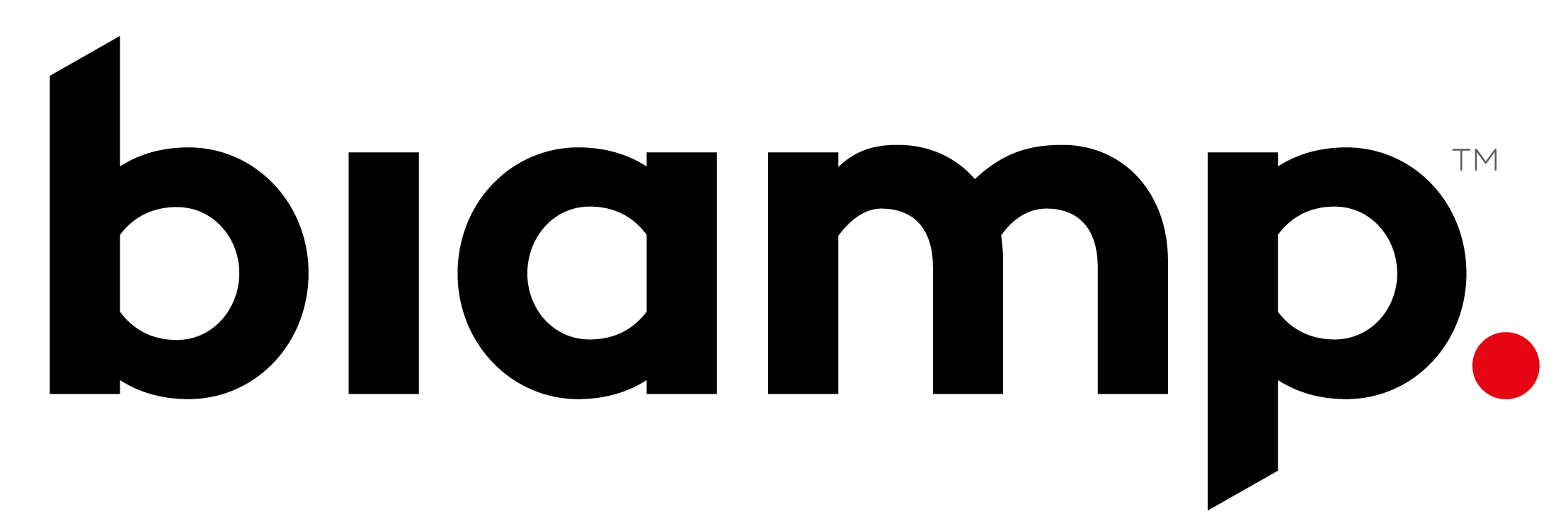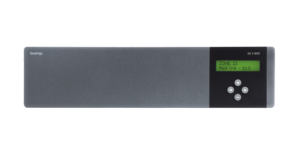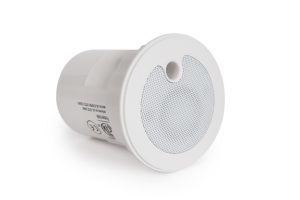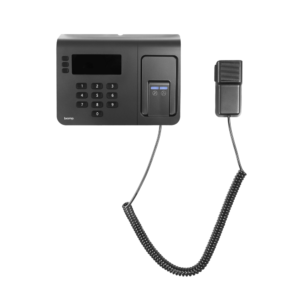Glossary
A B C D E F G H I J K L M N O P Q R S T U V W X Y Z
Every industry has its own jargon. Discover the terms used by acoustic consultants by searching through our extensive glossary.
A
ABC’s of Acoustics
• A= Absorb sound (usually via ceiling tile)
• B = Block sound (with workstation panels, wall placement, and workspace layout)
• C = Cover sound (with sound masking)
A combined approach is optimal although covering with sound masking typically leads to the most dramatic improvements in speech privacy at lowest cost.
Absorption: acoustic absorption is that property of any material that changes the acoustic energy of sound waves into another form, often heat, which it to some extent retains. The absorptive effectiveness of a given material is frequency-dependent and is affected by its size, shape, location and the mounting method used.
Acceptable/Normal Speech Privacy: according to the recently updated standard for Speech Privacy in Open Offices, (American Standard Test Method (ASTM) E1130–08) the speech privacy of a space is “acceptable” or “normal” (meaning not-readily understood) when the AI (Articulation Index) is under .20 or the PI (Privacy Index) is greater than 80%.
Acoustics: the study of sound, especially of how rooms interact with it.
Acoustical Ceiling Tile (ACT): also known as “T-Bar” or “lay-in” tile. It is a common ceiling treatment in many commercial and institutional interiors.
Articulation index (AI): a quantitative measurement of the intelligibility of speech in a given location; an articulation index of 1 means that all speech can be understood, 0 means that no speech can be understood.
ASTM (American Standard Test Method) E1130-08: ASTM develops international standards for materials, products, systems and services used in construction, manufacturing and transportation. ASTM E1130-08 is the standard test method for objective measurement of speech privacy in open offices using the Articulation Index (AI).
B
Band: see ‘frequency band.’
Bandwidth: the difference between the highest and lowest frequencies in a frequency band.
Block: (see ABC’s) sound blocking is commonly called soundproofing and is used to block sound from transmitting into adjacent areas or workstations. In general, if the source of unwanted sound is generated in another room, space, or from the outside and is transferring through a wall, ceiling, or floor into your space, then you need sound blocking products.
C
CAT-3: Category 3, an ISO standardized multi-conductor type of structured data cable.
Channels: unique output signals. Multiple channels are required for an unobtrusive quality of sound in an architectural space.
Confidential Speech Privacy: the standard measurement for this defines the AI as under .05 (5%) or the SPI as over 95% (ASTM E1130-08).
Control Module: the unit that generates the sound masking signal and that controls the output of the system.
Cover: (see ABC’s) typically addition of sound masking to provide speech privacy and lower distractions.
D
dB (decibel): the decibel (dB) is a logarithmic measure of the ratio between two quantities, often used in measurements of the loudness of sound.
dBA: (a-weighted decibel) the A-weighted decibel is one of four frequency weightings (the others are C-, B- & Z-) used to allow a sound level (volume) measurement to be expressed as a single number. The weightings approximate the responses of the ear to different frequencies at different levels. A-weighting is the most relevant to sound masking system loudness.
dB Tolerance: a term used to describe the spatial uniformity of sound masking in dB. The smaller the tolerance, the better the spatial uniformity the system provides. The best masking systems distribute masking within a 1dB tolerance. This means nowhere is the masking level more than 1dB different from the average.
Demountable Walls: a non-load bearing partition of dry construction from the floor to the finished ceiling (not to the deck above), assembled from prefabricated components, which can be installed, removed, and relocated easily.
Direct Field: the sound field from loudspeakers installed directly in the space, thus eliminating the need for the sound to penetrate a ceiling tile.
Directional: a term used to describe the distribution pattern of sound radiated from a sound source or loudspeaker. Highly directional speakers emit sound in a narrow pattern and are designed to project sound to greater distances. Typical in-plenum masking speakers are directional but use the hard ceiling deck to disperse sound somewhat. CSM’s direct-field speakers have a very wide dispersion pattern and are able to directly radiate into the space.
E
Emitter: another name for CSM’s loudspeaker.
F
FERPA (Family Educational Rights and Privacy Act): a U.S. Federal law that protects the privacy of student education records. The law applies to all schools that receive funds under the applicable program of the U.S. Department of Education.
Field Sound Transmission Class: (FSTC) evaluates the sound-insulating properties of in-place building elements. The FSTC measure of an installed partition takes into consideration weak points where sound can escape, such as electrical outlets, other wall penetrations and openings in the actual installation. (See Sound Transmission Class).
Frequency Band: a specific range of sound frequencies. Low frequencies are baritone or bass sounds; high frequencies are soprano-type sounds. Most sounds are a mix of frequencies. Standard bands include octave bands (highest frequency 2X the lowest frequency, and 1/3 octave bands, which approximate the ear’s critical bands or the narrowest band closely related to auditory masking.
G
GLBA (Gramm-Leach-Bliley Act’s Financial Privacy Rule): the Gramm–Leach–Bliley Act, also known as the Financial Services Modernization Act of 1999, was enacted November 12, 1999. One key rule under the Act is The Financial Privacy Rule, which governs the collection and disclosure of customers’ personal financial information by financial institutions. It also applies to companies, regardless of whether they are financial institutions, who receive such information. The Safeguards Rule requires all financial institutions to design, implement and maintain safeguards to protect customer information. The Safeguards Rule applies not only to financial institutions that collect information from their own customers, but also to financial institutions, such as credit reporting agencies, appraisers, and mortgage brokers, that receive customer information from other financial institutions.
H
HCAHPS (Hospital Consumer Assessment of Healthcare Providers and Systems): the first national, standardized, publicly reported patient survey regarding hospital care. Summary analyses of HCAHPS scores are available on the HCAHPS On-Line Web site, www.hcahpsonline.org. Payments to hospitals from Medicare/Medicaid are based partially on their HCAHPS survey results.
HIPAA (Health Insurance Portability and Accountability Act of 1996): Title I of HIPAA protects health insurance coverage for workers and their families when they change or lose their jobs. Title II of HIPAA, known as the Administrative Simplification (AS) provisions, requires the establishment of national standards for electronic health care transactions and national identifiers for providers, health insurance plans, and employers. Title II of HIPAA defines policies, procedures and guidelines for maintaining the privacy and security of individually identifiable health information as well as outlining numerous offenses relating to health care and sets civil and criminal penalties for violations.
Home-run: the initial cable in a run begins at the control module and connects the control module to the first emitter in a daisy chain.
Hertz (Hz): is a measure of cycles per second of a periodic phenomenon. 1 Hz means that an event repeats once per second; 100 Hz means 100 cycles per second.
I
J
K
L
Low Frequency Noise (LFN): noise below the 250 Hz octave band. It is important to note that LFN does not contribute to speech privacy. Although there is some energy in speech below 250 Hz, especially in male speech, its presence does not contribute to speech intelligibility or its inverse, speech privacy. For this reason, adding or removing LFN has no impact on speech privacy as recognized by the ASTM and ANSI standards. Some LFN masking sound may be acceptable but in CSM’s jury comparison trials, listeners have preferred sound masking with no added LFN.
M
N
Noise Reduction Coefficient (NRC): a single-number index determined in a lab test used to rate a material’s sound absorptive/reflective properties. The NRC rating is a weighted average of how absorptive a material is at the four frequencies bands (250, 500, 1000 and 2000 Hz), those that contribute the most to normal speech privacy. An NRC of zero is perfectly reflective, absorbing no sound; an NRC of 1 means it is perfectly absorptive. NRC is a measurement or rating standard, not a regulation or code. An important practical limitation of sound absorbing panels is that occupants typically hang pictures or papers and install shelving with books and other sound reflective surfaces on the panel walls, inhibiting their sound absorption effectiveness. Even if high NRC rated panels are installed, sound masking provides tremendous additional benefit to a work environment.
O
Octave Bands: specific range of sound frequencies, whereby the band is defined by a low frequency cutoff point, a high cutoff point and a center frequency.
Open Office Plan: a common configuration of large office spaces utilizing partial-height partitions.
P
Pink Noise/White Noise: pink noise is noise with a decreasing amount of energy per Hz with higher frequency and constant energy in octave bands. White noise is inaccurately, but commonly, used to describe any constant, low-level random background noise; however, technically noise is classified as “white” if it has a flat spectrum or energy per Hz over all audible frequencies. Qt Quiet Technology™ systems do not emit either a precisely “white” or precisely “pink” noise spectrum, as neither has an acceptable quality of sound. Although pink noise sounds somewhat more acceptable than white noise, it still has an unpleasantly “hissy” sound quality. A Qt Quiet Technology™ system instead uses a specially designed spectrum; one which has been found to provide the most pleasant quality for a given degree of speech privacy (see graph of pink, white, and speech spectra).
Plenum: the space between a ceiling and the floor deck above it, in which concealed building structural components, air conditioning ducts, wires, and other building utilities are located.
Plenum-Rated: if a material or component is plenum-rated, it has passed necessary tests for fire and smoke qualities as well as electrical safety and is deemed safe to be installed in plenums by the organizations such as Underwriter Laboratories (UL), Canadian Underwriter Laboratories (CUL) and United Testing Laboratories (UTL).
Privacy Index (PI): a measure of speech privacy, as a percentage of unintelligible speech, in a given area. (The inverse of AI). Technically, the PI = (1 – AI) * 100.
Q
R
Reflected Ceiling Plan (RCP): a “floor plan” of the ceiling, showing light fixtures, sprinkler heads, etc.
Run: a continuous string of emitters from the control module to the last emitter on a daisy chain.
S
Sound Masking: sound masking is the addition of an unobtrusive background sound, similar to airflow, to reduce the intelligibility of human speech and reduce distractions. The resulting environment leads to greater productivity and increased privacy and comfort.
Sound Spillover: a term used to describe sound that leaks into areas where it is not needed or wanted. With direct-field sound masking systems, sound spillover does not occur since speakers are placed only in the areas where sound masking is desired. In-plenum speaker sound masking systems cannot avoid sound spillover, particularly if walls for private offices, for instance, are built only to the ceiling and not to the ceiling deck.
Spatial Uniformity: a term used to describe the uniformity of a masking sound produced by an installed sound masking system. Uniform sound is necessary for a system to be effective (provide speech privacy) and unobtrusive (not perceptible generally and as a person walks through a space). A high quality system must be within the +/- 1dB tolerance level. Direct-field systems are the most straightforward way to achieve spatial uniformity. In-plenum systems can achieve spatial uniformity with significant tuning and properly placed plenum speakers so that sound leaks through the ceiling are accommodated. (See dB Tolerance.)
Spectrum: the frequency balance of a sound or noise. An early frequency spectrum for the purpose of masking speech was proposed by Bolt, Beranek and Newman Inc. (BBN) in the 1960’s and published by Leo Beranek. It was based on acoustical measurements of noise in a large number of typical office spaces without sound masking, but including noise from building heating and ventilating equipment and intrusive sound from office activity noise and exterior sources such as urban traffic. However later experience has demonstrated that low frequency contributions from these sources is not desirable whether is originates from masking sound or the sources themselves.
Speech Privacy: speech privacy is succinctly defined in the Glossary of American National Standard T.1-523-2001, a standard maintained by the U.S. Department of Commerce, National Telecommunications and Information Administration, Information Security program (INFOSEC). This standard states that speech privacy methods mean: “methods used to render speech unintelligible to the casual listener.” This definition embodies two key concepts: (a) the measurement of intelligibility/unintelligibility, which is a practice familiar to acoustics professionals since the first work done on the Articulation Index in the 1940’s by Leo Beranek and others. (b) the viewpoint of the “casual listener.” This definition of speech privacy does not cover intentional or assisted listening. Simply put, speech privacy can be defined as lack of a listener’s ability to understand intruding speech.
Sound Transmission Class (STC): an index of sound loss through a particular material as measured in a standardized acoustics lab test. It is derived from the amount of sound that is lost in sixteen standard 1/3 octave band frequencies from 125 Hz to 4000 Hz when transmitted through the material. STC is roughly the decibel reduction in noise a partition can provide, for instance. (See Transmission Loss.)
T
Transmission Loss (TL): the basis for determining a particular material’s STC. It is the measure of sound that is lost when transmitted through material such as a panel, wall or ceiling.
U
UL/CUL-Rated: Underwriter Laboratories/Canadian Underwriter Laboratories are independent safety testing and certification organizations. Manufacturers voluntarily submit their products for UL or other similar organizations’ testing.
V
W
White Noise: see ‘pink/white noise’ above.
X
Y
Z
Zone: an area/group of emitters with an independent volume control that is determined by functional, acoustical, and architectural requirements.





